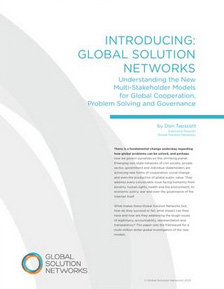The U.S. Department of Education has released a report comparing traditional face-to-face classroom instruction to learning supplemented or completely replaced by online learning. The conclusion: “Students who took all or part of their class online performed better, on average, than those taking the same course through traditional face-to-face instruction.”
The most effective teaching method blended face-to-face learning with online learning. The study notes that this blended learning often includes additional learning time because students can proceed at their own pace and lets them repeat material they find difficult.
The 93-page report, entitled an Evaluation of Evidence-Based Practices in Online Learning: A Meta-Analysis and Review of Online Learning Studies, was conducted by SRI International. Researchers looked at more than a thousand studies conducted between 1996 to 2008. Analysts then screened these studies to find those that (a) contrasted an online to a face-to-face condition, (b) measured student learning outcomes, (c) used a rigorous research design, and (d) provided adequate information to calculate an effect size.
Most of the comparative studies were done in colleges and adult continuing-education programs of various kinds, including medical training, higher education and corporate training. The researchers said they were surprised to find so few rigorous studies of K-12 students, so the report urges caution when applying the results to younger students.
Barbara Means, the study’s lead author and an educational psychologist at SRI International, was quoted on the New York Times’ website that “The study’s major significance lies in demonstrating that online learning today is not just better than nothing – it actually tends to be better than conventional instruction.”
The story notes that until fairly recently, online education amounted to little more than electronic versions of the old-line correspondence courses. That has really changed with arrival of Web-based video, instant messaging and collaboration tools. The study was limited to research of Web-based instruction (i.e., eliminating studies of video- and audio-based telecourses or stand-alone, computer-based instruction).
The real promise of online education is providing learning experiences that are more tailored to individual students than is possible in classrooms. In Grown Up Digital, I describe this as “student-focused” learning as opposed to traditional “teacher-focused” broadcast techniques with the teacher in front of a large class. The story correctly notes that online learning enables more “learning by doing,” which many students find more engaging and useful.
The moral of the story: Students would be better served with much of the curriculum being online. And to repeat what I said in the book, this does not mean a diminished role for teachers. Their time would be freed up to give extremely valuable one-on-one teaching.






Having both taught and wrote E-Learning courses the power of them is clear to me on the level of the individual learner. One of the biggest road blocks for “new” students is learning the LMS “Learning Management System”. With a combination of E-Learning supported by an Alternative Educational Center with teachers trained on the LMS would quickly reduce this to a speed bump. One colleague at my training session spoke to the experience of his First Nation students. A group who, in general, do not fair well in the competitive white classroom where children race to be chosen to give the right answer. Given the opportunity to reflect and respond many of this cultural group enjoyed more success in an E-Learning environment. Culture aside, I would imagine the experience could very well be similar for the shy or easily distracted student.
On another subject Don I just reviewed your book for an online course I am taking and for my colleagues at our PD Day. An excellent question for which I had no answer was, “Who paid the 4$ million for the research?” Can you help me out?
thx Bill
Mr. Tapscott
Bill Martel here again. Just wondering about the above question. Wondering when a response with be forthcoming.
thanks
Bill
Don,
This is really interesting to me as a (face-to-face) high-school teacher who also teaches e-learning staff-development courses. I've noticed that the participants in my online course (mostly teachers in my district) are usually pretty apprehensive at first, especially if it's their first experience with online learning. But they quickly form a very active, supportive learning community, and when they evaluate the course they have great things to say about how interactive and meaningful their experience was … even though, on a scale of interactivity, we're not doing as much as we could.
I'm now working on a project that attempts to create a virtual learning community for high-school Latin students, and I'd love for you to take a look at our project blog: http://joyfullatinlearning.wordpress.com/
Gratias maximas antequam!
Online learning is a lot more fun than traditional classroom learning.